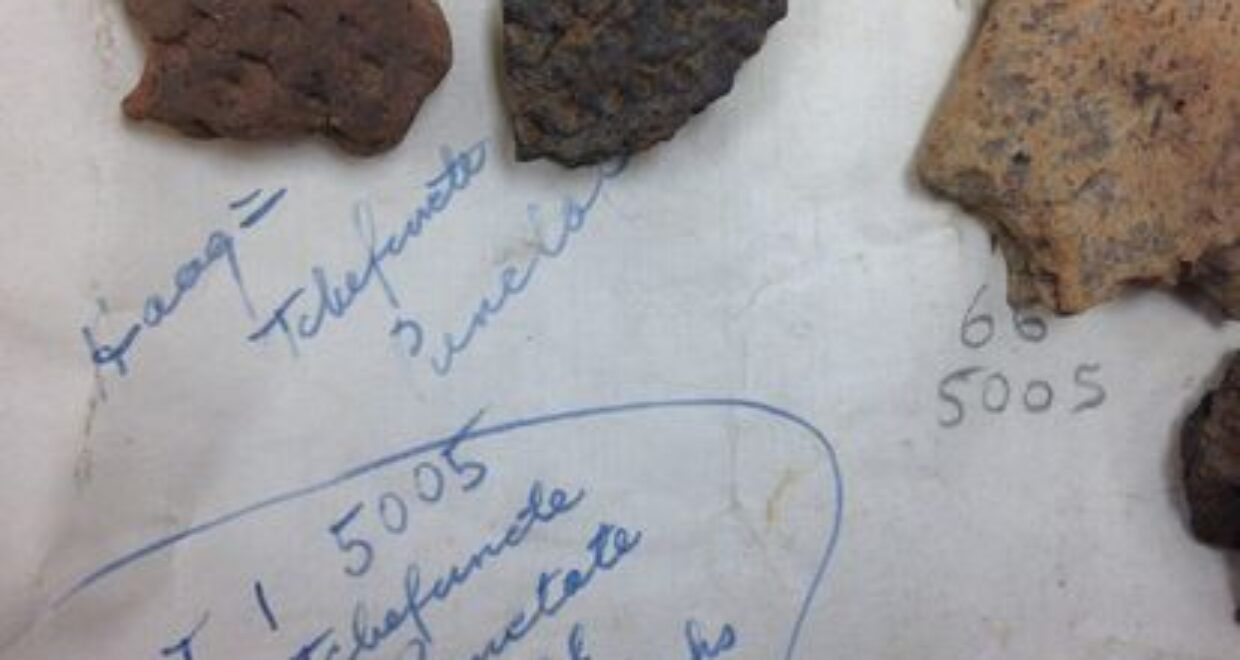Archaeological Practice in the Southeast United States
As the Southeastern Archaeological Conference (SEAC) begins, I examined Southeastern-focused articles in Advances in Archaeological Practice to identify emerging trends. Southeastern methodology may best be known for the 1950s Ford-Spaulding debate; however, this review shows that Southeastern methodology is still breaking new ground in archaeology. I identified three foci of research: inclusivity and collaboration; disaster response; and traditional methods-based articles with innovative studies. These three research areas reflect Southeastern archaeology which has long been a vibrant region, and SEAC members have addressed pivotal and often difficult issues in North American archaeology—collaboration, inclusivity, and climate change-through innovative means such as the use of legacy collections and developing harassment-free ways to teach field methods.
Articles—and there are about a dozen—that emphasize inclusivity and collaboration include obvious ones on collaborative archaeology with descendant communities, both Black and Native American (Reeves; Menaker et al; A. Thompson et al.) but also less obvious ones, such as collaboration with collectors (Pitblado et al.), avocational archaeologists (Espenshade), collectors of human remains (Schroeder and Nayapalitzin), farmers (Wertz), and cemetery documentation (Miller). Many involve making data accessible through creation of specific datasets (Pluckhahn and Wallis), underwater archaeology (Lemke et al.), and collaboration with other groups in zooarchaeology (Neusius et al.). These are innovative ways to both answer research questions and make data accessible. Making the field safe also makes it inclusive. An article highlighting the high risk of sexual harassment and assault in the field and its long-term impacts on predominantly women’s careers (Meyers et al.) spurred research by Colaninno and colleagues that identified factors which contribute to sexual harassment and assault and suggested methods to decrease the incidence.
Many articles are specific to the increasingly adverse effects of climate change on archaeological sites. A forthcoming issue specific to coastline damage includes an overview of heritage risks in the Southeast and beyond (Anderson et al.); timing sea level rise on the Georgia Coast (Cochran et al.); loss of heritage as Louisiana bayous are flooded (Filoromo et al.); shoreline erosion in Florida (Kangas et al.) and South Carolina (Gaillard et al.) and its impacts on sites, and the use of community engagement to document climate change (Wright and Hylton; Miller). In a similar vein, researchers like Peres and Deter-Wolf as well as McCormack and Stackelbeck and Murtha et al. present detailed examinations of how to use archaeology and data collection as a part of preservation planning. Together these public-facing studies clearly articulate how Southeastern archaeological studies contribute to broader goals of Historic Preservation, as recently detailed by the Advisory Council on Historic Preservation (ACHP Climate Statement).
Other articles are more methods-based, such as examination of organic residues (Lambert et al), examining legacy radiocarbon data (Lulewicz) and answering how many dates are needs (Lulewicz and Ritchison), digital curation and morphometrics (Selden et al.), the use of legacy datasets (Davis et al), multi-staged magnetic survey (Sampson and Horsley), and absorbed residue analysis (King et al.). Other researchers examine how children view material culture (Henderson and Levstik), a valuable contribution to effective Public Archaeology. However, the methods in these articles are not in any way traditional;, they are innovative, returning to often-neglected legacy collections that contain large datasets, identify big-picture changes to refine understanding chronology, site structures and landscapes, trade and religion. I look forward to hearing cutting-edge research in Williamsburg and seeing it in print soon.

Cited research in American Antiquity:
Statistical Techniques for the Discovery of Artifact Types by Albert C. Spaulding
Comment on A. C. Spaulding, “Statistical Techniques for the Discovery of Artifact Types”* by James A. Ford
Reply to Ford by Albert C. Spaulding
Creating and Supporting a Harassment- and Assault-Free Field School by Carol E. Colaninno, Shawn P. Lambert, Emily L. Beahm and Carl G. Drexler
Maureen Meyers is a Principal Investigator with New South Associates, Inc in Stone Mountain Georgia and the Past President (2018-2020) of the Southeastern Archaeological Conference.






